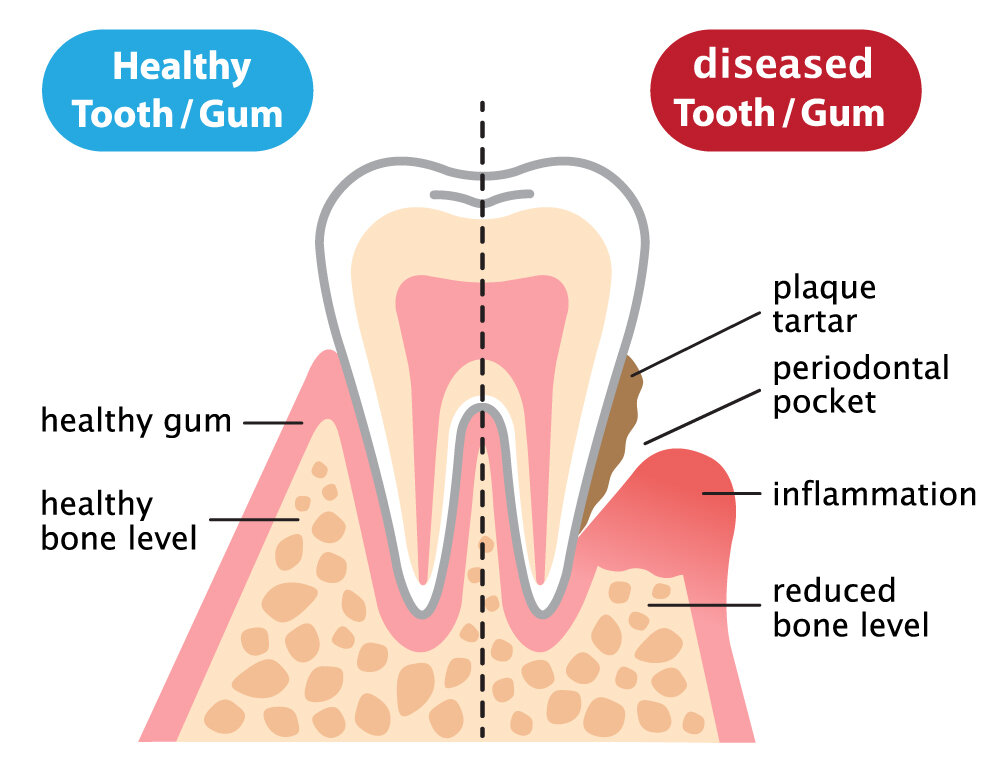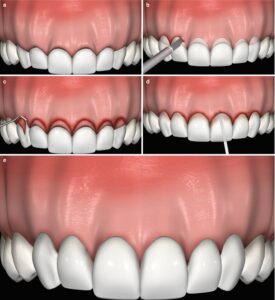Gum Treatment
Scaling and root planing
Scaling and root planning (sometimes called “deep cleaning”) is the most common procedure for treating periodontitis, or gum disease. During the procedure, dentists use scalers to clean debris off the enamel surfaces of the teeth. Then, they use specially-curved instruments called “curettes” to remove calculus and other diseased tissue that accumulates on root surfaces in periodontal pockets beneath the gum line. That’s the root planning part. Removing calculus and debris from root surfaces that have periodontal pockets allows the gums to reattach to the root surfaces and helps stop the progression of gum disease and damage.

If you have any of the following symptoms of gum disease, you should see your dentist right away:
- Bleeding gums (a sign of an ongoing oral infection)
- Swollen gums
- Red, sensitive gums
- Pain when brushing or flossing
- Gum recession
- Gum discoloration
- Tooth pain
- Constant bad breath, no matter how much you brush or use mouthwash
As always, the best way to figure out if you need scaling and root planning is to ask your dentist. They’ll be able to identify the cause of your symptoms and recommend the best solution. If you’re worried about gum disease, schedule an exam immediately.
crown lengthening procedure
Crown lengthening can help. Dental surgeons perform crown lengthening by recontouring gum tissue, and sometimes bone, to expose more of a tooth’s surface for a crown. It’s a common procedure and often takes less than an hour to complete.

Gingivectomy
The procedure is the total removal of a portion of your gums from in and around a tooth or teeth in order to treat gum disease or to lengthen the height or width of a tooth or a section of teeth. It can be performed by a general dentist who has training in periodontal surgery. Another type of periodontal surgery is called a gingivoplasty. A gingivoplasty is different than a gingivectomy as the former only involves a partial removal of the gums. The latter removes an entire portion of a gum section.

